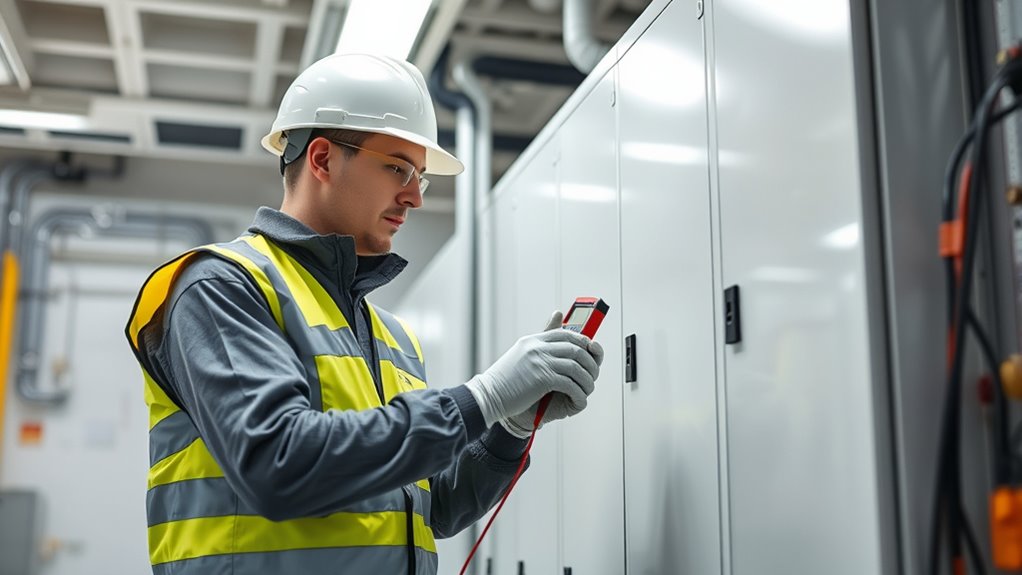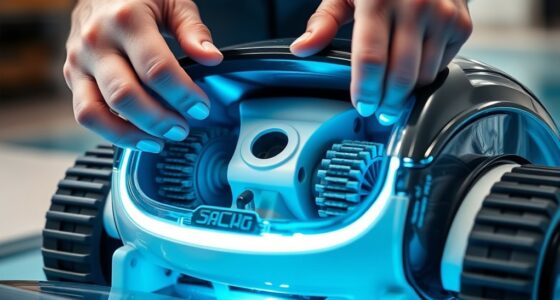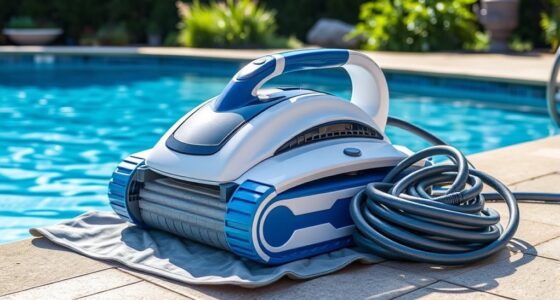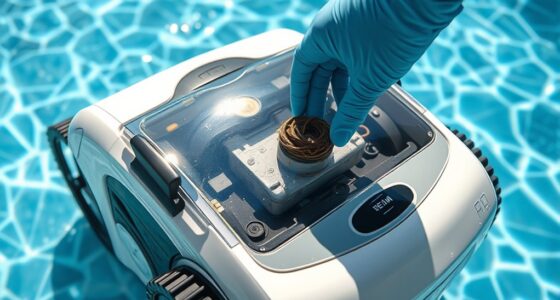Annual safety checks give you peace of mind by ensuring your equipment and workspace stay compliant and hazard-free. Regular inspections help you catch potential problems early, prevent costly incidents, and maintain a safe environment for everyone. Testing fire alarms, reviewing safety systems, and confirming backup systems are active all contribute to your confidence in your safety measures. Keep in mind, maintaining these checks regularly is key—continue on to discover how to optimize your safety routines.
Key Takeaways
- Conduct comprehensive inspections of fire alarms, detectors, and control panels to ensure system functionality and compliance.
- Review and update emergency exit plans, ensuring clear signage and accessible routes for effective evacuation.
- Test backup power systems and safety equipment like extinguishers and emergency lighting for reliability.
- Schedule regular safety audits to identify and mitigate hazards proactively, reducing workplace risks.
- Document all inspections and maintenance activities to maintain compliance and provide ongoing safety assurance.
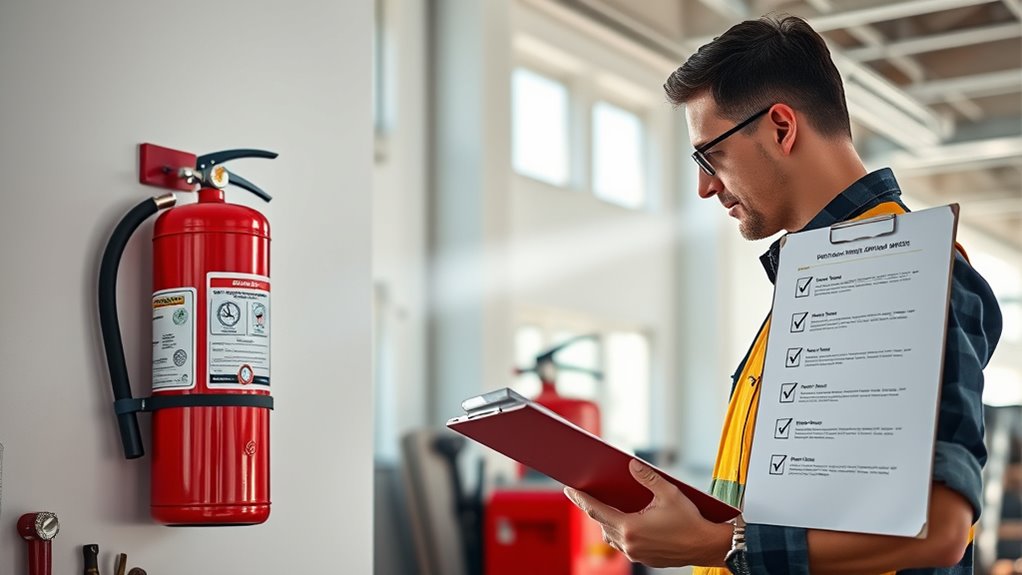
Regular annual safety checks are essential to guarantee your equipment and workspace remain safe and compliant. These checks help identify potential hazards before they cause accidents or injuries, giving you peace of mind knowing that your environment meets all safety standards. One of the most critical aspects of these inspections is fire alarm testing. Fire alarms are your first line of defense during a fire emergency, and ensuring they function properly can make all the difference. During fire alarm testing, you verify that alarms activate promptly when triggered and that all components, including control panels and detectors, are in working order. This process isn’t just about compliance – it’s about protecting lives. If your fire alarm system is outdated or malfunctioning, you risk delays in evacuation, which can lead to injuries or worse. Regular testing makes sure you’re prepared and that your system will perform when it truly counts. Additionally, maintaining awareness of fire safety systems and their capabilities ensures comprehensive protection. Alongside fire alarm testing, reviewing and practicing your emergency exit plans is equally crucial. Over the course of a year, layouts may change, new employees may join, or obstacles might appear in escape routes. During your safety checks, ensure that all emergency exits are clearly marked, unobstructed, and easily accessible. Conduct drills to confirm that everyone in your workspace knows where to go and how to evacuate efficiently. Clear, well-rehearsed emergency exit plans can considerably reduce chaos during an actual emergency. It’s important to update these plans if there are any changes to your workspace or personnel, and to communicate these updates effectively. Regularly practicing your exit strategies helps identify potential bottlenecks or hazards, so you can address them before an emergency occurs. Moreover, these safety checks should involve an in-depth review of all safety equipment, including fire extinguishers, smoke detectors, and emergency lighting. Ensuring that fire alarms are connected to a reliable power source and that backup systems are operational can prevent failures during power outages. Documenting each inspection helps maintain a record of compliance and highlights areas needing improvement. When you stay proactive with annual safety checks, you’re not just ticking boxes—you’re creating a safer environment for everyone. You’ll feel more confident in your ability to respond swiftly and effectively to emergencies, reducing risks and ensuring everyone’s safety. Ultimately, investing the time in these regular safety checks means fewer surprises, peace of mind, and a workplace that prioritizes safety above all else.
Frequently Asked Questions
How Often Should Safety Checks Be Scheduled for Optimal Safety?
You should schedule safety checks regularly to guarantee ideal safety. Preventive maintenance is key, so consider performing these checks at least once a year, or more often if your equipment or environment demands it. Following strict safety protocols helps prevent accidents and keeps everything running smoothly. By staying proactive with safety inspections, you minimize risks and maintain a safe, efficient space. Consistent checks are essential for peace of mind and long-term safety.
Are There Specific Safety Checks Recommended for Different Vehicle Types?
You should tailor your vehicle maintenance and safety checks based on your vehicle type. For example, cars need brake and tire inspections, while trucks might require suspension and load capacity checks. Always follow safety standards specific to your vehicle, ensuring regular inspections for parts prone to wear and tear. By customizing safety checks, you keep your vehicle running smoothly and safely, reducing risks and prolonging its lifespan.
What Are the Signs Indicating the Need for an Urgent Safety Inspection?
When you notice warning signs or emergency indicators, it’s a clear call to action. Unusual noises, vibrations, or warning lights on your dashboard are signs you shouldn’t overlook. If your vehicle pulls to one side, has difficulty braking, or if you smell strange odors, it’s time for an urgent safety inspection. Addressing these early ensures your safety and keeps your vehicle running smoothly, preventing bigger issues down the road.
Can Safety Checks Be Performed at Home, or Should They Be Professional?
You might wonder if you can do DIY safety checks at home or if you should opt for a professional inspection. While some simple tasks like checking smoke alarms or securing loose fixtures can be done yourself, it’s best to leave detailed safety inspections to trained professionals. A professional inspection ensures thoroughness, accuracy, and peace of mind, especially for complex systems like electrical wiring or gas appliances.
How Do Safety Checks Impact Insurance Premiums and Coverage?
Think of your safety checks as keys to uncover better insurance rates. When you perform regular safety checks, insurers often offer insurance discounts, rewarding your proactive approach. These checks can lead to premium adjustments, often lowering your costs and improving coverage. By staying on top of safety, you not only protect your home but also demonstrate responsibility, making you a lower-risk policyholder and saving you money in the long run.
Conclusion
By scheduling annual safety checks, you protect your home, guarantee your peace of mind, and maintain your peace of mind. You prevent potential hazards, promote safety, and preserve your well-being. You stay ahead of issues, avoid costly repairs, and build confidence in your safety measures. Ultimately, these checks safeguard your space, support your peace of mind, and empower you to enjoy your home without worry. Prioritize your safety, and enjoy the confidence that comes with knowing you’re prepared.
